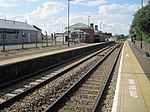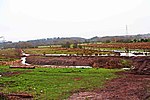Hartlebury Castle
Castles in WorcestershireCountry houses in WorcestershireEngvarB from December 2017Episcopal palaces in EnglandGrade I listed buildings in Worcestershire ... and 3 more
Grade I listed castlesGrade I listed housesNature reserves in Worcestershire

Hartlebury Castle, a Grade I listed building, near Hartlebury in Worcestershire, central England, was built in the mid-13th century as a fortified manor house, on manorial land earlier given to the Bishop of Worcester by King Burgred of Mercia. It lies near Stourport-on-Severn in an area with several large manors and country houses, including Witley Court, Astley Hall, Pool House, Areley Hall and Hartlebury and Abberley Hall. Later, it became the bishop's principal residence.
Excerpt from the Wikipedia article Hartlebury Castle (License: CC BY-SA 3.0, Authors, Images).Hartlebury Castle
B4193, Wychavon
Geographical coordinates (GPS) Address Nearby Places Show on map
Geographical coordinates (GPS)
| Latitude | Longitude |
|---|---|
| N 52.3386 ° | E -2.2421 ° |
Address
B4193
DY11 7YE Wychavon
England, United Kingdom
Open on Google Maps









